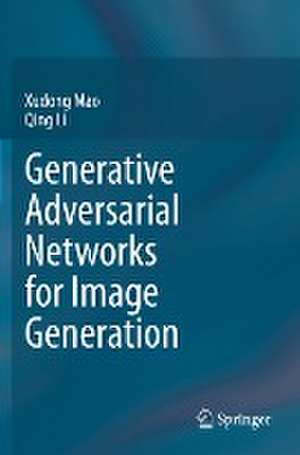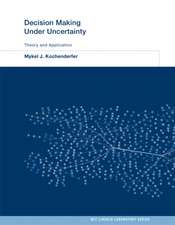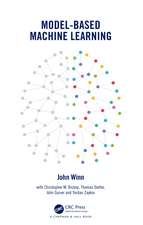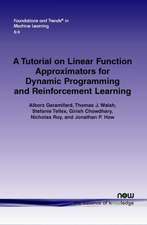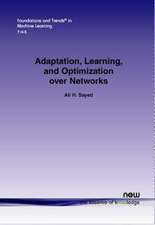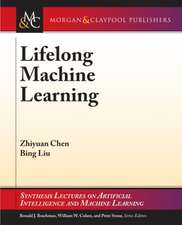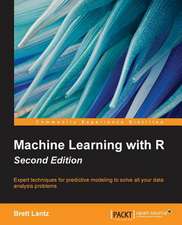Generative Adversarial Networks for Image Generation
Autor Xudong Mao, Qing Lien Limba Engleză Paperback – 19 feb 2022
Although image generation has been challenging, GAN image generation has proved to be very successful and impressive. However, there are two remaining challenges for GAN image generation: the quality of the generated image and the training stability. This book first provides an overview of GANs, and then discusses the task of image generation and the detailsof GAN image generation. It also investigates a number of approaches to address the two remaining challenges for GAN image generation. Additionally, it explores three promising applications of GANs, including image-to-image translation, unsupervised domain adaptation and GANs for security. This book appeals to students and researchers who are interested in GANs, image generation and general machine learning and computer vision.
| Toate formatele și edițiile | Preț | Express |
|---|---|---|
| Paperback (1) | 857.83 lei 38-44 zile | |
| Springer Nature Singapore – 19 feb 2022 | 857.83 lei 38-44 zile | |
| Hardback (1) | 870.67 lei 38-44 zile | |
| Springer Nature Singapore – 18 feb 2021 | 870.67 lei 38-44 zile |
Preț: 857.83 lei
Preț vechi: 1072.28 lei
-20% Nou
Puncte Express: 1287
Preț estimativ în valută:
164.17€ • 170.76$ • 135.53£
164.17€ • 170.76$ • 135.53£
Carte tipărită la comandă
Livrare economică 10-16 aprilie
Preluare comenzi: 021 569.72.76
Specificații
ISBN-13: 9789813360501
ISBN-10: 981336050X
Pagini: 77
Ilustrații: XII, 77 p. 41 illus., 29 illus. in color.
Dimensiuni: 155 x 235 mm
Ediția:1st ed. 2021
Editura: Springer Nature Singapore
Colecția Springer
Locul publicării:Singapore, Singapore
ISBN-10: 981336050X
Pagini: 77
Ilustrații: XII, 77 p. 41 illus., 29 illus. in color.
Dimensiuni: 155 x 235 mm
Ediția:1st ed. 2021
Editura: Springer Nature Singapore
Colecția Springer
Locul publicării:Singapore, Singapore
Cuprins
Generative Adversarial Networks (GANs).- GANs for Image Generation.- More Key Applications of GANs.- Conclusions.
Notă biografică
Xudong Mao is currently a Postdoctoral Fellow at the Hong Kong Polytechnic University. His research interests are in the areas of computer vision and deep learning, especially generative adversarial networks and unsupervised learning. His research work has been published in top-ranked journals and conferences in the area, such as TPAMI, ICCV, and IJCAI. Dr. Mao’s paper ‘Least squares generative adversarial networks’ has, to date (November 2020), been cited more than 1700 times since it was published in 2017 at the ICCV conference.
Qing Li is currently a Chair Professor at the Hong Kong Polytechnic University. He also serves/served as a Guest Professor of Zhejiang University, an Adjunct Professor of the University of Science and Technology of China, and a Visiting Professor at the Wuhan University and the Hunan University. His research interests include database modeling, multimedia retrieval and management, social media computing and e-learning systems.Dr. Li has published over 400 papers in technical journals and international conferences in these areas, and is actively involved in the research community by serving as a journal reviewer, program committee chair/co-chair, and as an organizer/co-organizer of numerous international conferences. Currently he is the Chairman of the Hong Kong Web Society, a councillor of the Database Society of Chinese Computer Federation (CCF), a member of the CCF Big Data Experts Committee, and a member of the international WISE Society’s steering committee.
Qing Li is currently a Chair Professor at the Hong Kong Polytechnic University. He also serves/served as a Guest Professor of Zhejiang University, an Adjunct Professor of the University of Science and Technology of China, and a Visiting Professor at the Wuhan University and the Hunan University. His research interests include database modeling, multimedia retrieval and management, social media computing and e-learning systems.Dr. Li has published over 400 papers in technical journals and international conferences in these areas, and is actively involved in the research community by serving as a journal reviewer, program committee chair/co-chair, and as an organizer/co-organizer of numerous international conferences. Currently he is the Chairman of the Hong Kong Web Society, a councillor of the Database Society of Chinese Computer Federation (CCF), a member of the CCF Big Data Experts Committee, and a member of the international WISE Society’s steering committee.
Textul de pe ultima copertă
Generative adversarial networks (GANs) were introduced by Ian Goodfellow and his co-authors including Yoshua Bengio in 2014, and were to referred by Yann Lecun (Facebook’s AI research director) as “the most interesting idea in the last 10 years in ML.” GANs’ potential is huge, because they can learn to mimic any distribution of data, which means they can be taught to create worlds similar to our own in any domain: images, music, speech, prose. They are robot artists in a sense, and their output is remarkable – poignant even. In 2018, Christie’s sold a portrait that had been generated by a GAN for $432,000.
Although image generation has been challenging, GAN image generation has proved to be very successful and impressive. However, there are two remaining challenges for GAN image generation: the quality of the generated image and the training stability. This book first provides an overview of GANs, and then discusses the task of image generation and the detailsof GAN image generation. It also investigates a number of approaches to address the two remaining challenges for GAN image generation. Additionally, it explores three promising applications of GANs, including image-to-image translation, unsupervised domain adaptation and GANs for security. This book appeals to students and researchers who are interested in GANs, image generation and general machine learning and computer vision.
Although image generation has been challenging, GAN image generation has proved to be very successful and impressive. However, there are two remaining challenges for GAN image generation: the quality of the generated image and the training stability. This book first provides an overview of GANs, and then discusses the task of image generation and the detailsof GAN image generation. It also investigates a number of approaches to address the two remaining challenges for GAN image generation. Additionally, it explores three promising applications of GANs, including image-to-image translation, unsupervised domain adaptation and GANs for security. This book appeals to students and researchers who are interested in GANs, image generation and general machine learning and computer vision.
Caracteristici
Offers an overview of the theoretical concepts and the current challenges of generative adversarial networks Proposes advanced GAN image generation approaches with higher image quality and better training stability Introduces various key applications of GANs, including image-to-image translation, unsupervised domain adaptation and GANs for security
